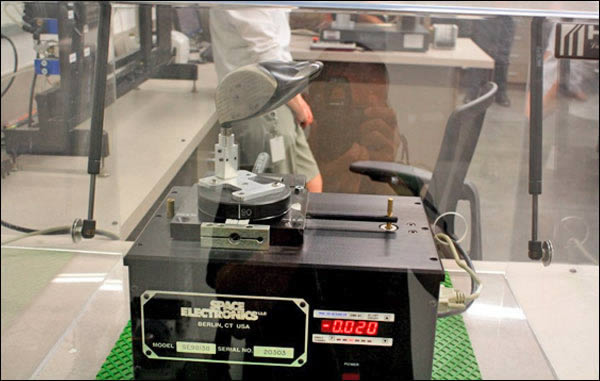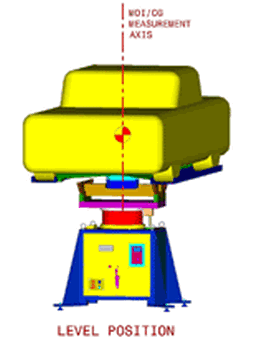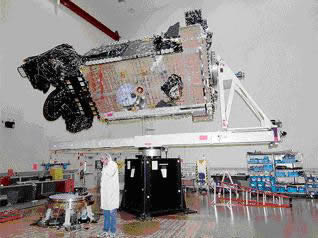Center of Gravity machine
Center of gravity in high performance racing is no small thing. Just a fraction of centimeter change in balance point can make the difference between a solid performer and a race car you have to fight during one competitive lap. Differences in engine and overall balance, along with other factors will alter performance.
The center of gravity (CoG) for any car has a profound effect on the way it drive, roll, handles, and responds to driver inputs. As most of us know, a nose-heavy or tail-heavy car drive poorly. Constructors and designers who don't know this will find out the hard way!
In the excitement of driving the latest masterpiece that you've labored perhaps months and spend millions of dollars, do you take proper steps to determine it's CoG? Sometimes, only paper work and blueprint are not enough. Don't risk your masterpiece!
All teams in Formula 1, LeMan, MotoGP competitors and every serious team own or use contracted Center of Gravity machine.
Engine manufacturers use smaller Center of Gravity machine to test components such as gearboxes, transmissions, crankshafts, clutches, flywheels, pistons, rocker arms, connecting rods, steering wheels and more. Reducing moment of inertia is especially important to the car racing industry, where lower moment of inertia of moving engine and transmission components translates into a net gain in power transmitted to the wheels.

Center of gravity machine during Nike golf club testing
 |
Center of Gravity Measurement |
Big Center of Gravity machines are used to test CoG on full scale engines and entire cars. Lowering the center of gravity of the car is essential, because it impacts stability and handling in curves.
In order to get center of gravity and moment of inertia in 3 axes, an object needs to be placed on the Center of Gravity machines in 3 orthogonal positions.
Idea is to tilt the car by 20 degrees in three axes and to extrapolate the results for 90 degrees. The extraordinary precision of instruments allows very precise results with this method, in range of around 0.1 mm for CoG.
 |
Space Electronics is the best known manufacturer of CoG machines, and only one in my knowledge, which have machines for full scale car testing.
Over the last 50 years, they have sold more moment of inertia and center of gravity instruments than any other company. They are inventors of the spherical gas bearing spin balance machine which uses two force transducers to determine both product of inertia and CoG offset in a single run. Another reason is the extraordinary reliability of their products: some of their instruments have been used daily for more than 20 years without malfunctioning. Larger instruments (KSR and MP Series) are used to measure moment of inertia and center of gravity location of engines and entire vehicles or smaller airplanes.
 |
Center of Gravity Measurement in NASA facilities. Thing on MP Series Space Electronics Center of Gravity machine is a satelite |
Space Electronics KSR series instruments can offer the highest accuracy available for CG measurement with the use of closed-loop force rebalance technology. Since their development more than 20 years ago, KSR systems have proven to be superior to conventional passive technology such as load cells. These instruments have a dynamic range that is greater than 30,000 to 1. One instrument can cover a range of payload weight previously requiring two machines! These instruments are available in a variety of sizes and measure both center of gravity and moment of inertia.
These machines feature:
CENTER OF GRAVITY measurement along two horizontal axes in a single setup with better than +/- 0.025mm accuracy for payloads weighing as little as 4% of machine capacity!
MOMENT OF INERTIA measurement around a vertical axis with accuracy better than +/- 0.1%.
UNBALANCE MOMENT is measured directly. Corrections can be made with the test part mounted and changes in CG observed immediately.
CORRECTION WEIGHTS and locations computed to achieve test part static balance.
When F1 team have a problems with balance of the car, do not use tires properly or try to extract last tenths of the second from setup of the car, the way they will do that is to look deeply into the set-up of the car and see if there is anything there what can be done in this area.
To help them with that, they will use a centre of gravity machine called a seven-poster rig.
This is a hydraulically driven device on to which you mount the car and which simulates the forces going through it out on the track.
A seven-poster rig in motion is quite something to see - it really emphasizes how violently an F1 car is being smashed about when it's on the limit. Technicians then work with collected data to prepare next race in best possible way.






